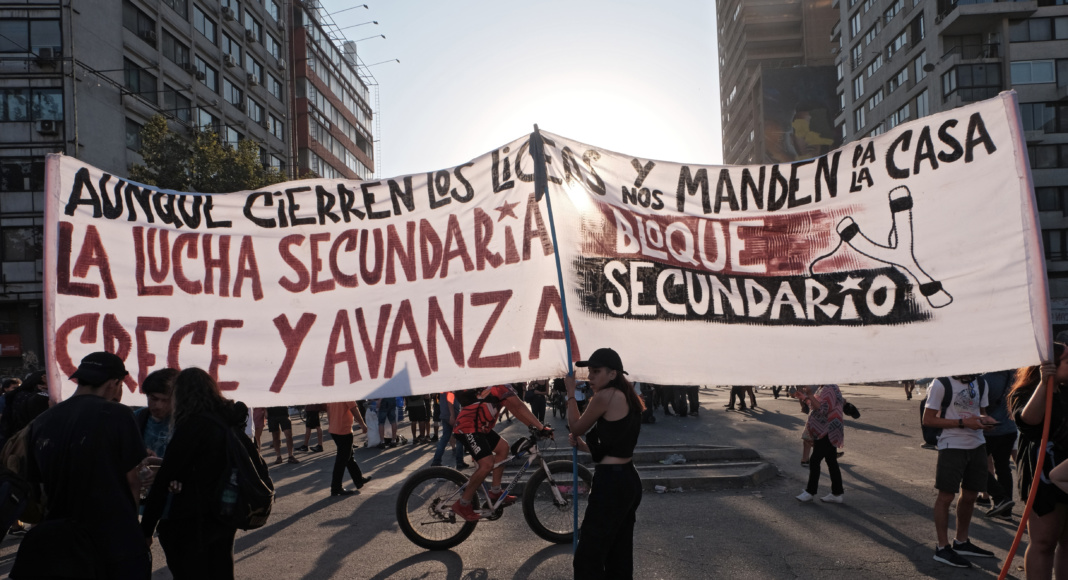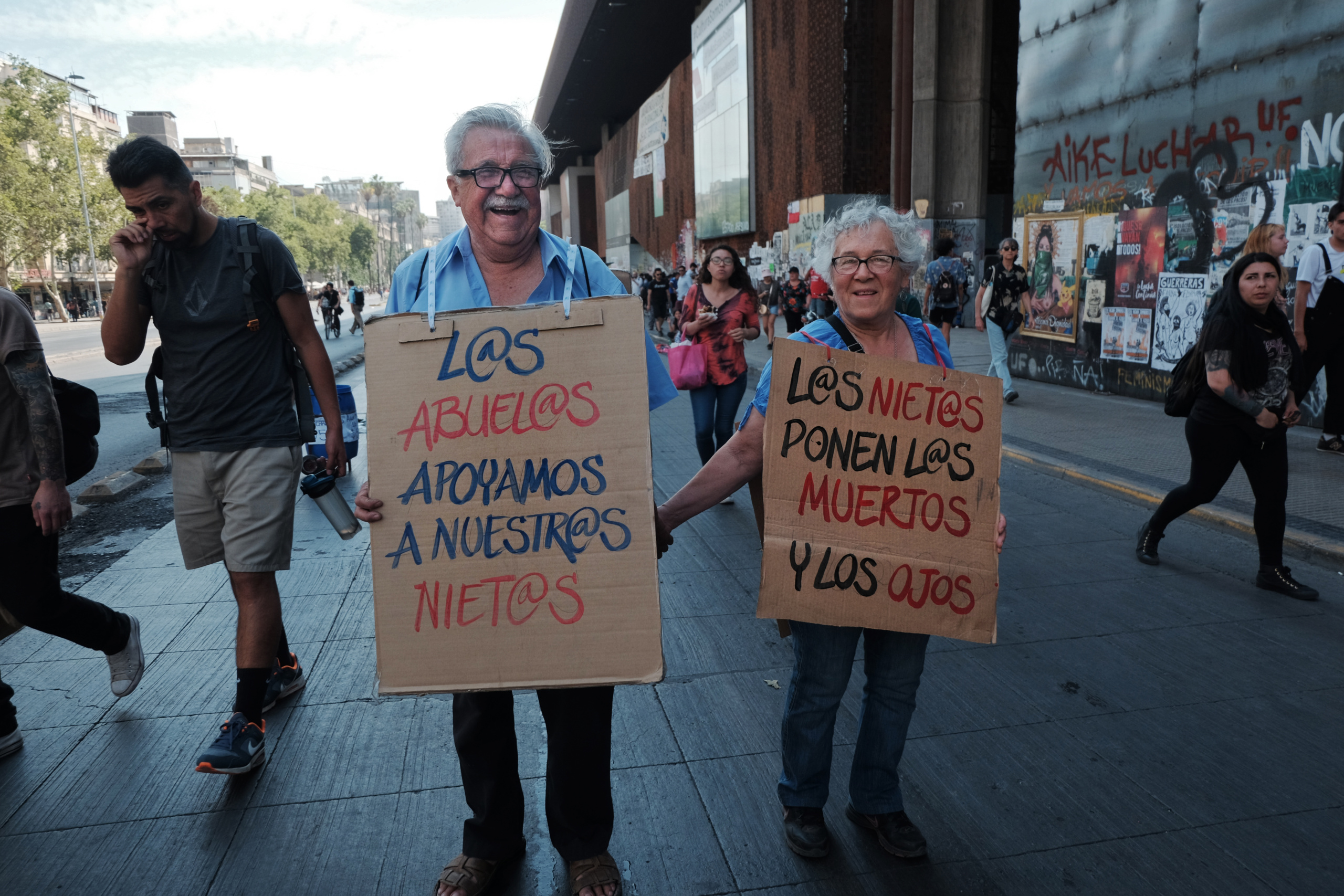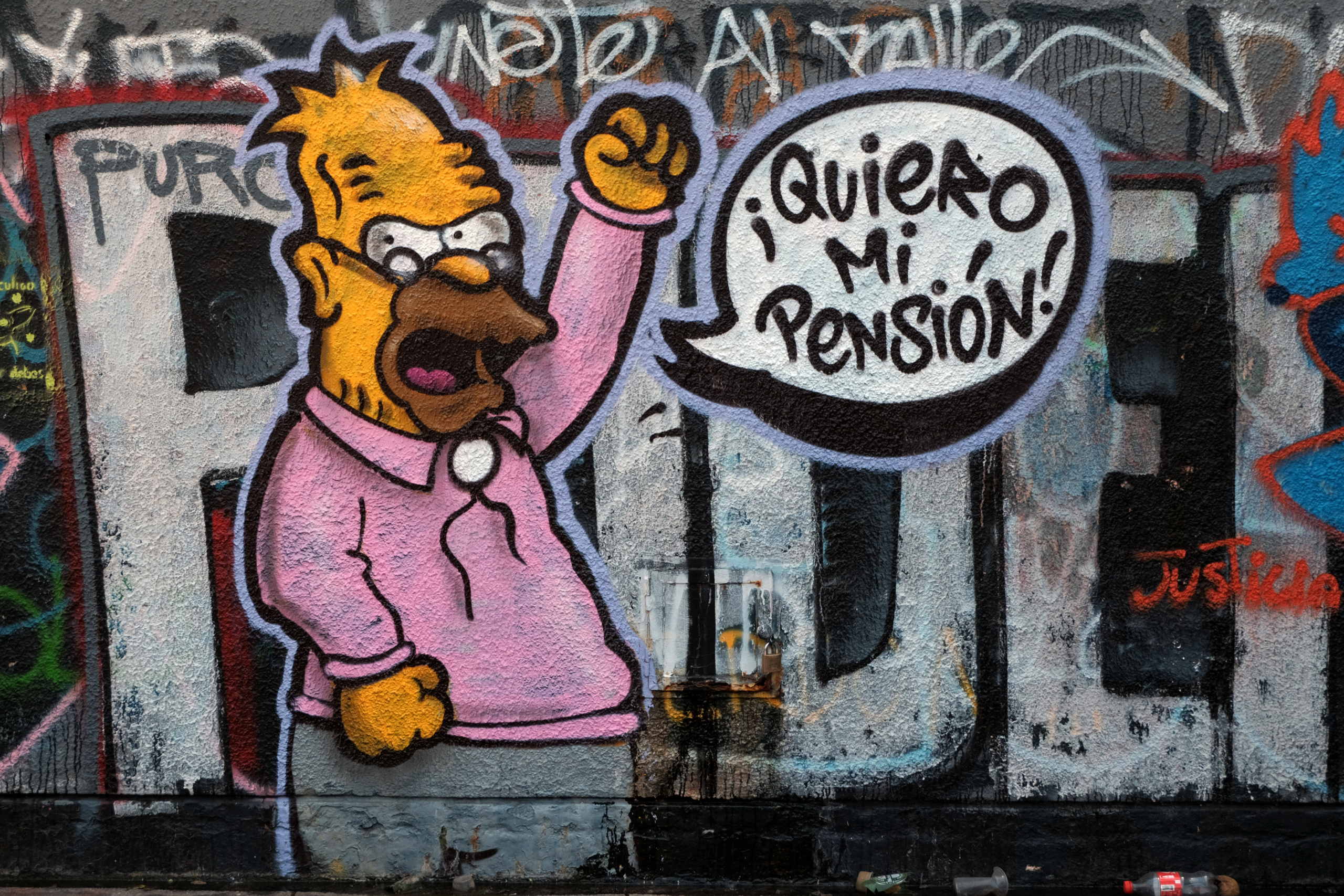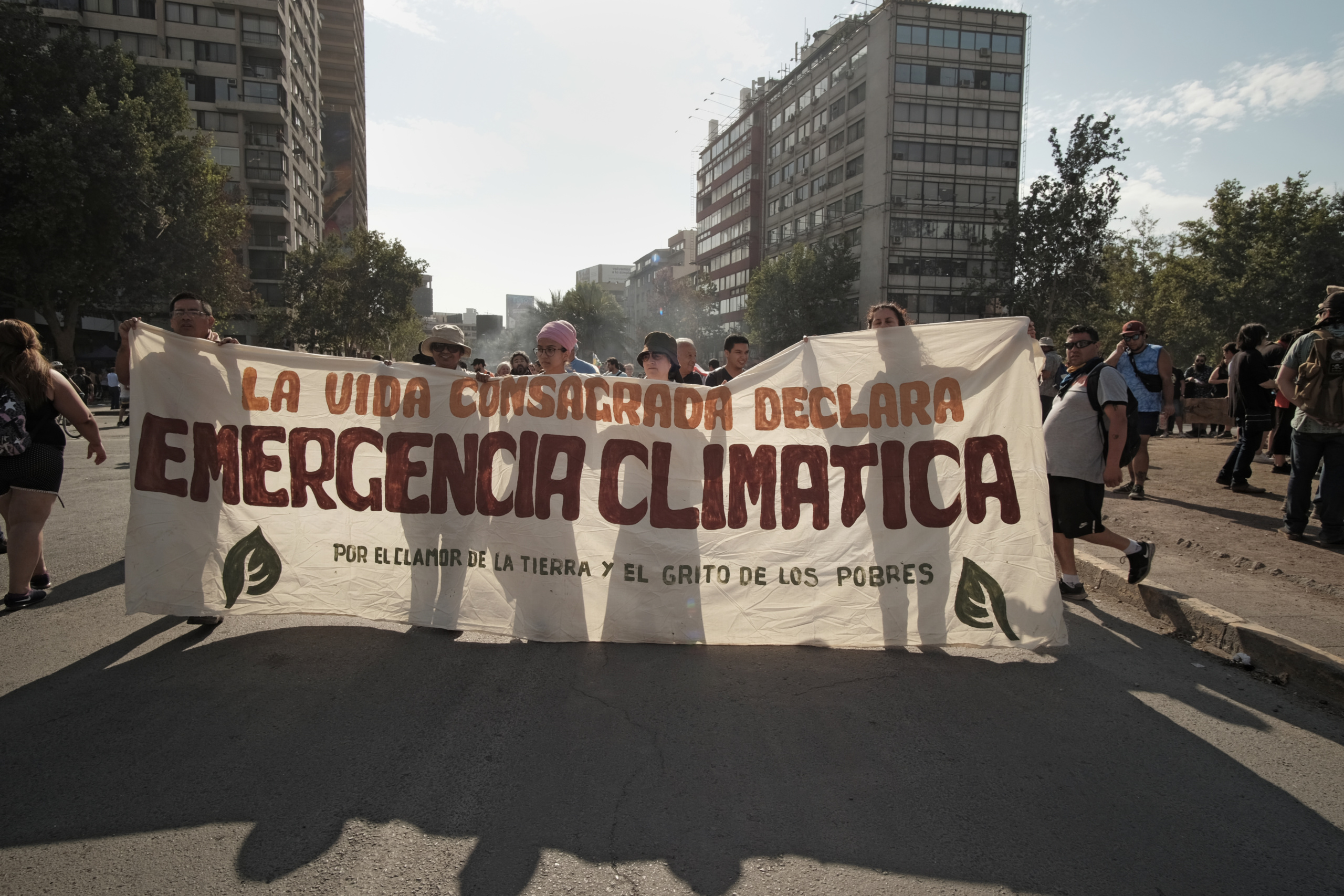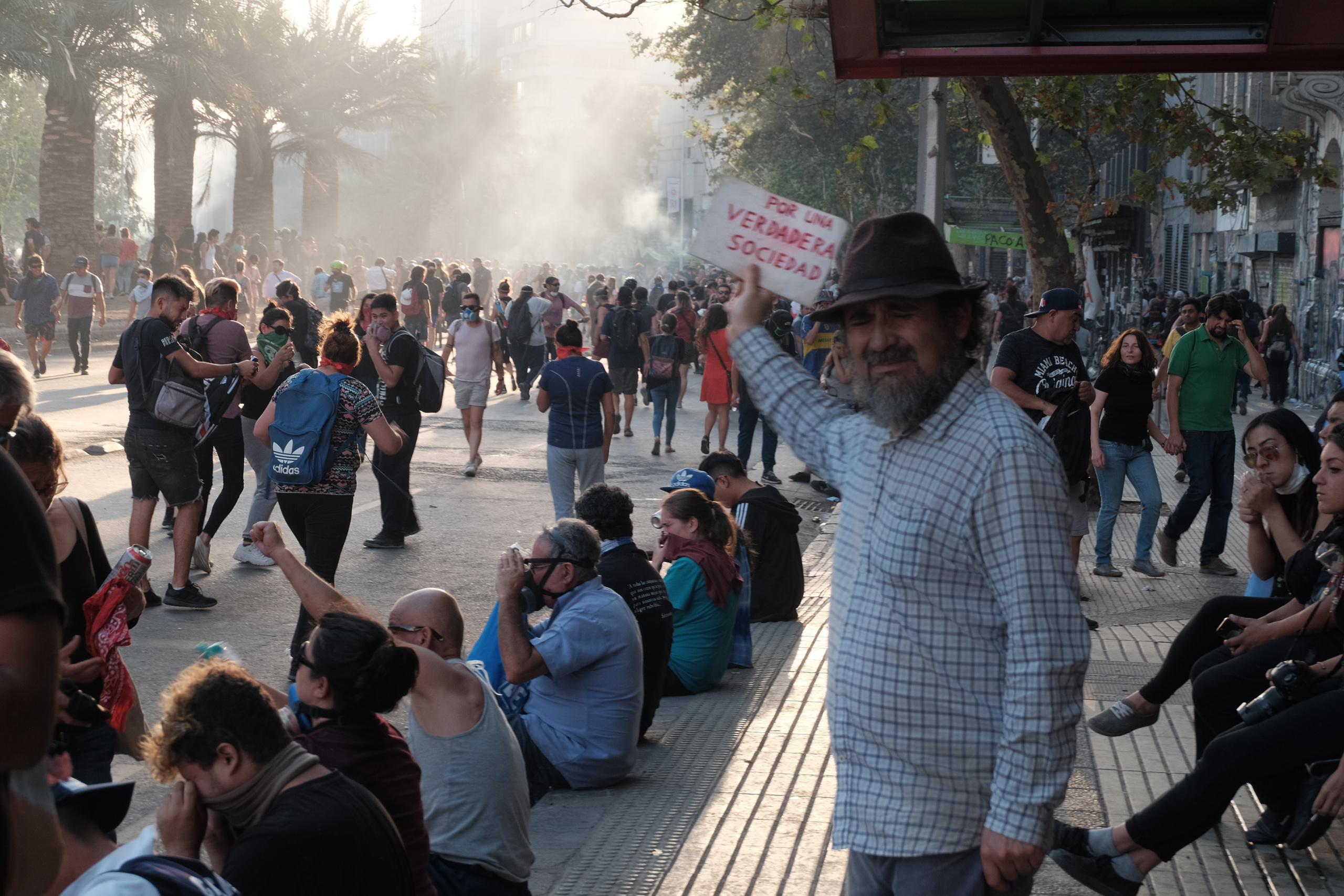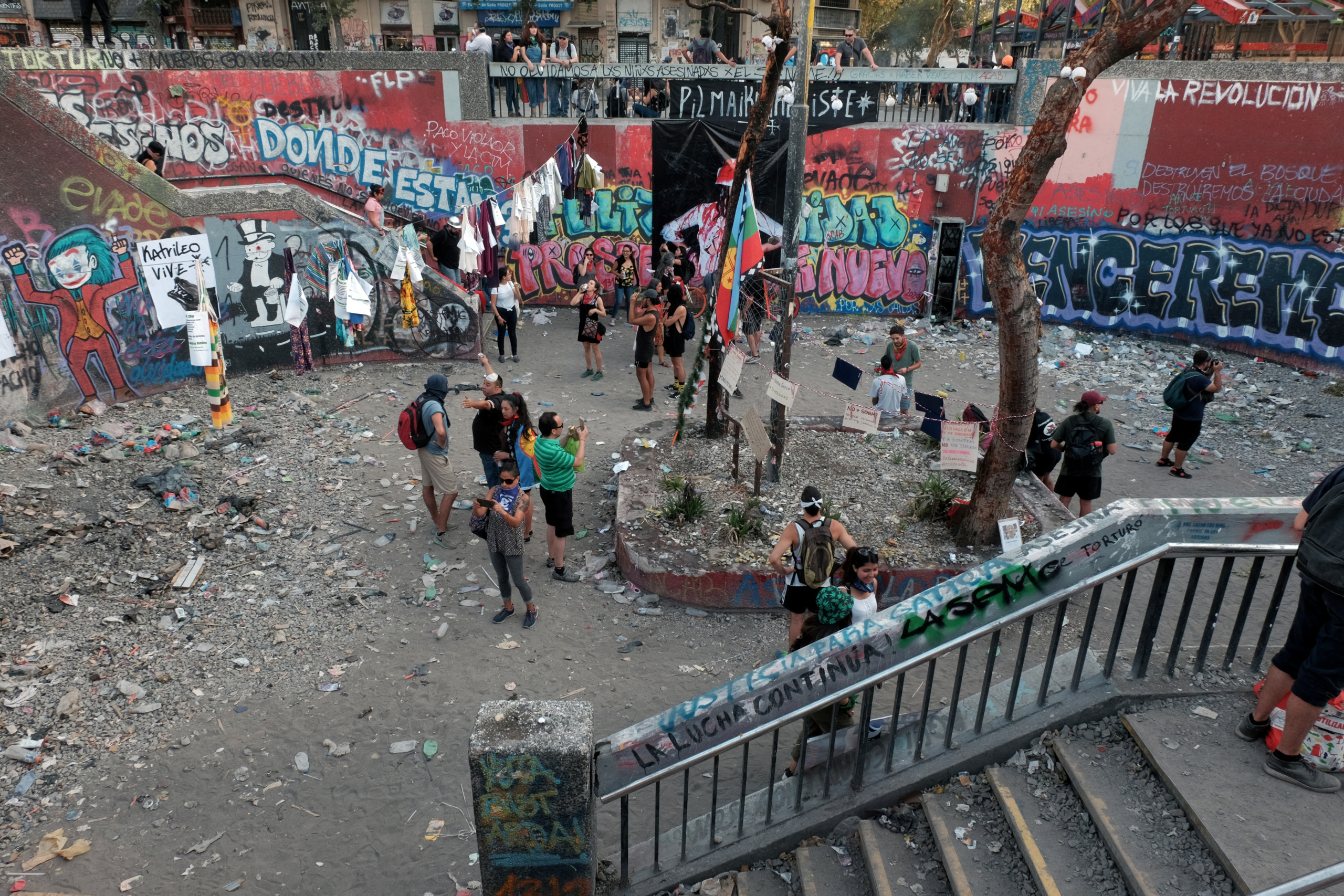Luis Bustamante’s images of Chile’s estallido social speak for themselves. Most were taken of protesters in the capital, Santiago, in and around Plaza Baquedano – renamed by protesters as Plaza de la Diginidad. Others cover graffiti and stencil work that popped up during this period in a range of Chilean cities. We look back after a year of protests and human rights abuses, and look forward to next weekend’s referendum.
Yesterday marked a year since Chile’s ‘estallido social‘ began on October 18, 2019, when students boycotted the raised metro fair and massive street protests were sparked, demanding dignity in one of Latin America’s most unequal and nakedly neoliberal societies.
Illustrators, musicians, photographers and writers have been exhaustively documenting this period of history, looking to take hold of a narrative which has been skewed by national media, and has relied on social media, foreign reporting and external monitoring of human rights abuses to document the truth.
One of the outcomes of months of protest is the historic national referendum which will take place next Sunday October 25, 2020. Chileans will democratically decide whether or not to replace the 1980 constitution, which was installed during Pinochet’s military dictatorship.
Delayed from April until now due to the pandemic, which has seen 492,000 cases to date in the country, this plebiscite marks an opportunity for Chileans to vote for better social safety – one of the main demands of protests which began a year ago – but threatens a crash in foreign investment. According to polls, the majority favours changing the Pinochet constitution, but opinion is polarised.
If the ‘Yes’/ ‘Apruebo’ vote wins next Sunday, Chile will begin the two-year process of writing a new constitution. But even if the Apruebo vote wins and the option to have a full constituent assembly is approved, many in the protest and social movements suspect there will be a stitch-up by the traditional political parties.
These images by photographer Luis Bustamante highlight protesters’ demands, record their ephemeral artistic expressions and give a hopeful sense of unity. Click through to enlarge each image, scroll down for information about the photographer.
About the photographer
Luis Bustamante came to the UK as a political refugee from Chile in late 1974. He completed M.Phil studies at Hull University and worked in photography education in London and Bristol. Concurrently he carried out documentary work in Britain and South America. His work includes two books (and two more in preparation) on British life for Café Royal Books, the 2003 anti-war demonstrations in Britain and extensive documenting of Yorkshire in the late 1970s.
He has worked in South America, particularly Chile and Argentina. In regular visits to Chile, his work has dealt with the impact of the nitrate industry, cities like Valparaíso and Valdivia and a survey of cemeteries from Atacama to Chiloé. He has regularly covered political developments there, including Pinochet’s death in 2006 and the Estallido Social in 2019-20. His work is particularly concerned with the effects of the neoliberal model, of which Chile has been the testing ground.

